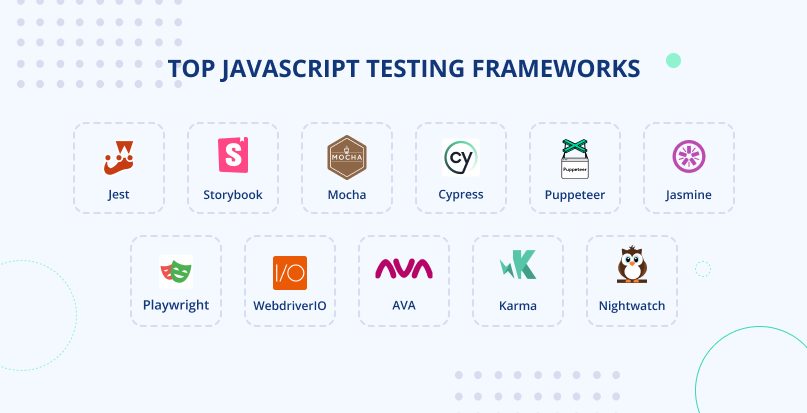In the ever-accelerating world of software development, the stability and reliability of our applications are paramount. The JavaScript ecosystem, with its constant stream of updates across frameworks like React, Vue.js, and Angular, demands a robust testing strategy to ensure quality and prevent regressions. For years, one tool has stood as a cornerstone of this strategy: Jest. Born at Facebook and battle-tested across countless projects, Jest has established itself as a powerful, “batteries-included” testing framework that simplifies the process of writing effective tests.
While the landscape of development tools is always shifting, with exciting updates in the worlds of Vite News and the rise of competitors like Vitest, understanding Jest remains a critical skill for any serious JavaScript developer. This article serves as a comprehensive guide to mastering Jest in the modern era. We’ll explore its core concepts, dive into advanced techniques like mocking and snapshot testing, and discuss its place within the broader ecosystem, touching on everything from Node.js News to the latest trends in front-end development with Next.js News and Svelte News. Whether you’re a seasoned veteran or new to testing, this is your definitive update on all things Jest.
The Core of Jest: Setting the Foundation for Reliable Tests
Jest’s enduring popularity stems from its brilliant design philosophy: provide a comprehensive testing solution with zero configuration required for most projects. This approach removes the initial friction often associated with setting up a testing environment, allowing developers to focus on what matters—writing code and the tests that validate it. This is a stark contrast to older setups that required manually integrating a test runner (like Karma), an assertion library (like Chai), and a mocking library (like Sinon).
The Zero-Configuration Philosophy
When you start a new project with a tool like Create React App, Jest is pre-configured and ready to go. It includes everything you need out of the box:
- Test Runner: An intelligent runner that executes tests in parallel, optimizing for speed.
- Assertion Library: A rich set of “matchers” accessible via the
expect()global, allowing you to verify values in a readable way. - Mocking and Spies: Powerful built-in utilities for creating test doubles, isolating your code from external dependencies.
- Code Coverage: The ability to generate code coverage reports with a simple command-line flag (
--coverage).
This all-in-one package is a significant part of the Jest News story and a key reason for its widespread adoption across projects using everything from jQuery News-era legacy code to modern frameworks like Remix News and SolidJS News.
Writing Your First Test: A Practical Example
The best way to understand Jest is to see it in action. Let’s assume we have a simple utility module for string manipulation.
File: stringUtils.js
function capitalize(str) {
if (typeof str !== 'string' || str.length === 0) {
return '';
}
return str.charAt(0).toUpperCase() + str.slice(1);
}
module.exports = { capitalize };To test this function, we create a corresponding test file. Jest automatically discovers files named *.test.js or *.spec.js.
File: stringUtils.test.js
const { capitalize } = require('./stringUtils');
describe('stringUtils', () => {
describe('capitalize', () => {
it('should capitalize the first letter of a standard string', () => {
// Arrange: Define the input
const input = 'hello world';
// Act: Call the function
const result = capitalize(input);
// Assert: Check the result
expect(result).toBe('Hello world');
});
it('should return an empty string if the input is not a string', () => {
expect(capitalize(123)).toBe('');
expect(capitalize(null)).toBe('');
expect(capitalize(undefined)).toBe('');
});
it('should handle an empty string gracefully', () => {
expect(capitalize('')).toBe('');
});
});
});This example showcases Jest’s core structure. The describe blocks group related tests, while the it (or test) blocks define individual test cases. The expect function, paired with a matcher like .toBe(), performs the actual assertion.

Mocking and Spies: Isolating Components for Precision Testing
In any real-world application, your code doesn’t exist in a vacuum. It interacts with APIs, databases, third-party libraries, and other modules. To write true “unit” tests, you must isolate the unit of code under test from these external dependencies. This is where Jest’s powerful mocking capabilities shine, a topic that is always relevant in Jest News discussions.
Why Mocking is Essential
Imagine you have a function that fetches user data from an API. Testing this function directly would involve making a real network request. This is slow, unreliable (the network could be down), and can have side effects. Mocking allows you to replace the API module with a “fake” version that you control, ensuring your tests are fast, deterministic, and focused solely on your function’s logic. This is a critical practice whether you’re testing a React News component that fetches data or a service in a NestJS News backend.
Practical Mocking with `jest.fn()` and `jest.mock()`
Let’s consider a service that uses an external API client (like `axios`) to fetch data. We want to test our service without actually hitting the network.
File: userService.js
const axios = require('axios');
const fetchUser = async (userId) => {
try {
const response = await axios.get(`https://api.example.com/users/${userId}`);
return response.data;
} catch (error) {
return null;
}
};
module.exports = { fetchUser };Now, let’s test it by mocking the `axios` module.
File: userService.test.js
const axios = require('axios');
const { fetchUser } = require('./userService');
// Mock the entire axios module
jest.mock('axios');
describe('userService', () => {
it('should fetch and return a user object on success', async () => {
// Arrange: Define the mock data and mock the implementation
const mockUser = { id: 1, name: 'John Doe' };
axios.get.mockResolvedValue({ data: mockUser });
// Act: Call the function
const user = await fetchUser(1);
// Assert: Check that the correct data was returned and axios was called correctly
expect(user).toEqual(mockUser);
expect(axios.get).toHaveBeenCalledWith('https://api.example.com/users/1');
expect(axios.get).toHaveBeenCalledTimes(1);
});
it('should return null if the API call fails', async () => {
// Arrange: Mock a failed API call
axios.get.mockRejectedValue(new Error('Network Error'));
// Act: Call the function
const user = await fetchUser(999);
// Assert: Check that the function handles the error gracefully
expect(user).toBeNull();
});
});In this example, jest.mock('axios') automatically replaces all of `axios`’s methods with mock functions. We can then provide a specific implementation for our test case using mockResolvedValue. This gives us complete control over the dependency, allowing us to test both success and failure scenarios reliably. This technique is indispensable for testing applications built with frameworks like AdonisJS News or RedwoodJS News that heavily rely on external services.
Advanced Jest: Snapshots, Timers, and Asynchronous Code
Beyond basic assertions and mocking, Jest offers a suite of advanced features designed to tackle complex testing scenarios. Mastering these tools can significantly improve the quality and coverage of your test suite, especially when working with UI components or time-sensitive logic.
Snapshot Testing: Capturing UI and Data Structures

Snapshot testing is a powerful feature for preventing unintentional changes. When you run a snapshot test for the first time, Jest generates a “snapshot” file—a serialized representation of your component’s output or a data structure. On subsequent test runs, Jest compares the new output to the saved snapshot. If they don’t match, the test fails, alerting you to a potential regression or an intended change that needs to be approved.
This is particularly useful for testing UI components in libraries like React. Here’s an example using `@testing-library/react`.
import React from 'react';
import { render } from '@testing-library/react';
import UserProfile from './UserProfile';
// A simple React component
// const UserProfile = ({ user }) => (
// <div>
// <h2>{user.name}</h2>
// <p>Email: {user.email}</p>
// </div>
// );
describe('UserProfile', () => {
it('should render correctly with user data', () => {
const mockUser = { name: 'Jane Doe', email: 'jane.doe@example.com' };
const { asFragment } = render(<UserProfile user={mockUser} />);
// This will create a snapshot file on the first run
// and compare against it on subsequent runs.
expect(asFragment()).toMatchSnapshot();
});
});While incredibly useful, it’s crucial to use snapshots wisely. Avoid snapshotting large, complex objects that change frequently, as this can lead to “snapshot blindness,” where developers approve changes without proper review. The latest Jest News often includes discussions on best practices for managing snapshot files effectively.
Handling Asynchronous Operations
Modern JavaScript is inherently asynchronous. Jest provides first-class support for testing promises and `async/await`. The key is to ensure Jest waits for the asynchronous operation to complete before finishing the test. The most straightforward way is to use the `async/await` syntax directly in your test function, as demonstrated in the `userService` example earlier. When not using `async/await`, you must return the promise from the `it` block so Jest knows to wait for it to resolve or reject.
Jest in the Modern Ecosystem: Best Practices and the Road Ahead
Jest remains a dominant force, but the JavaScript testing landscape is not static. Staying current with best practices and understanding how Jest fits alongside new tools is essential for maintaining a modern and efficient development workflow.
Configuration and Integration

While Jest champions zero-config, most large-scale projects will benefit from a `jest.config.js` file. This allows you to customize test environments, configure module path mapping, set up global setup/teardown scripts, and integrate with other tools. For instance, integrating with TypeScript News is seamless using the `ts-jest` preset. Similarly, build tools like **Webpack News** and **Babel News** have mature integrations, while newer, faster transpilers like **SWC News** are also supported.
The Rise of Alternatives: Jest vs. Vitest
No discussion of Jest News would be complete without mentioning its main competitor: Vitest. Built on top of the increasingly popular **Vite News** build tool, Vitest offers incredible speed, a Jest-compatible API, and a modern ESM-first architecture. For projects already using Vite, the synergy is undeniable. However, Jest’s strengths remain its unparalleled maturity, extensive ecosystem, and robust support for a wide variety of project types beyond the Vite ecosystem, including those built with **Node.js News** frameworks like **Express.js News** or **Koa News**, and even mobile app frameworks like **Capacitor News** or **NativeScript News**.
Best Practices for Maintainable Tests
- Arrange-Act-Assert (AAA): Structure your tests clearly. First, arrange the setup (create mocks, define data). Second, act by calling the function or rendering the component. Third, assert that the outcome is what you expected.
- Be Descriptive: Name your `describe` and `it` blocks clearly. A failing test’s name should tell you exactly what broke.
- Avoid Logic in Tests: Tests should be simple and predictable. Avoid `if` statements or loops within a test case, as this makes the test itself a potential source of bugs.
- One Assertion Per Test: While not a strict rule, aiming for a single, focused assertion per test makes failures easier to diagnose.
Conclusion: The Enduring Relevance of Jest
In conclusion, Jest continues to be a formidable and essential tool in the JavaScript developer’s arsenal. Its all-in-one nature, powerful mocking capabilities, and mature ecosystem make it a reliable choice for projects of any scale, from simple libraries to complex full-stack applications built with tools like **Blitz.js News** or **Meteor News**. While the ecosystem continues to evolve with exciting developments in the **Vitest News** and **Playwright News** spaces, the fundamental principles of testing that Jest champions remain timeless.
By mastering its core concepts, leveraging its advanced features wisely, and adhering to best practices, you can build robust, maintainable test suites that provide confidence and accelerate your development velocity. The most important takeaway from the ongoing **Jest News** is that a commitment to quality testing is, and always will be, a hallmark of professional software engineering.

